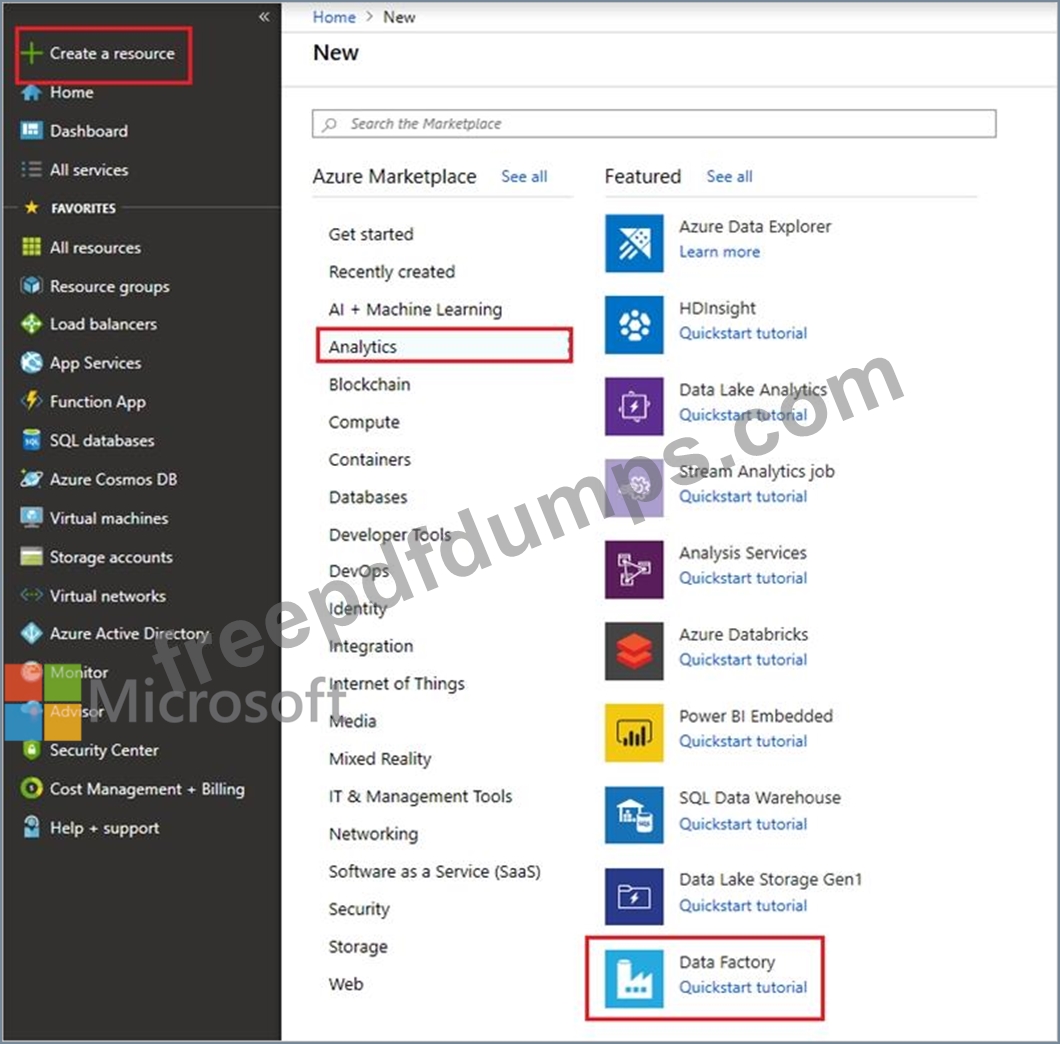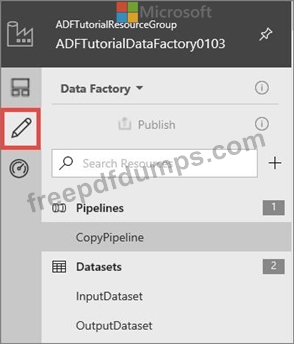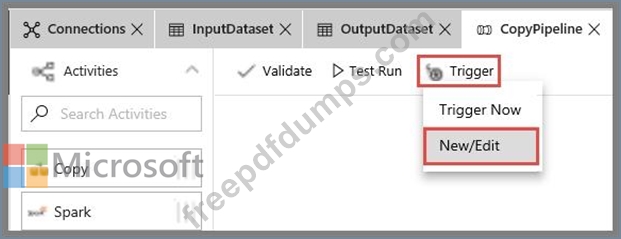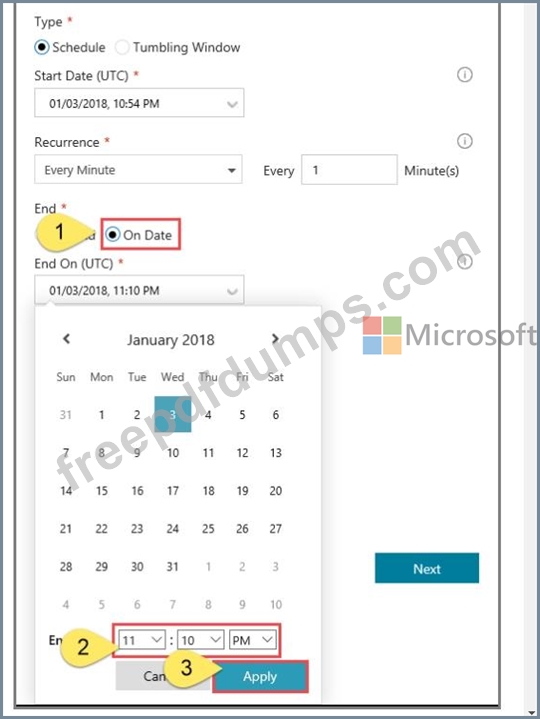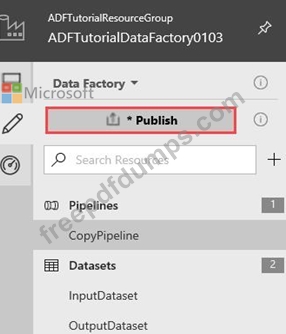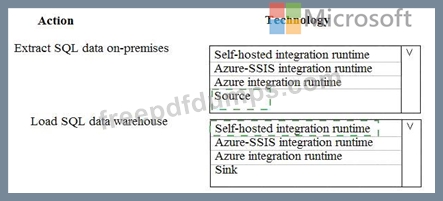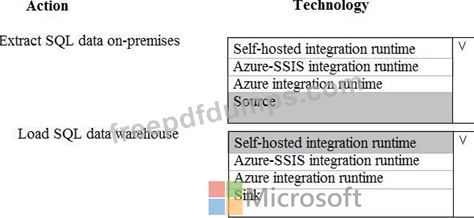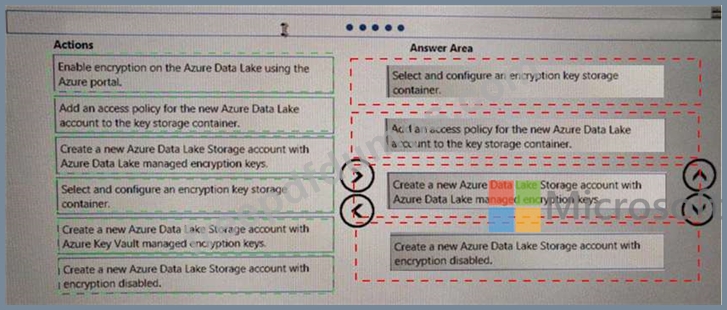DP-200 Exam Question 186
Note: This question is part of a series of questions that present the same scenario. Each question in the series contains a unique solution that might meet the stated goals. Some question sets might have more than one correct solution, while others might not have a correct solution.
After you answer a question in this scenario, you will NOT be able to return to it. As a result, these questions will not appear in the review screen.
You plan to create an Azure Databricks workspace that has a tiered structure. The workspace will contain the following three workloads:
* A workload for data engineers who will use Python and SQL
* A workload for jobs that will run notebooks that use Python, Spark, Scala, and SQL
* A workload that data scientists will use to perform ad hoc analysis in Scala and R The enterprise architecture team at your company identifies the following standards for Databricks environments:
* The data engineers must share a cluster.
* The job cluster will be managed by using a request process whereby data scientists and data engineers provide packaged notebooks for deployment to the cluster.
* All the data scientists must be assigned their own cluster that terminates automatically after 120 minutes of inactivity. Currently, there are three data scientists.
You need to create the Databrick clusters for the workloads.
Solution: You create a Standard cluster for each data scientist, a High Concurrency cluster for the data engineers, and a Standard cluster for the jobs.
Does this meet the goal?
After you answer a question in this scenario, you will NOT be able to return to it. As a result, these questions will not appear in the review screen.
You plan to create an Azure Databricks workspace that has a tiered structure. The workspace will contain the following three workloads:
* A workload for data engineers who will use Python and SQL
* A workload for jobs that will run notebooks that use Python, Spark, Scala, and SQL
* A workload that data scientists will use to perform ad hoc analysis in Scala and R The enterprise architecture team at your company identifies the following standards for Databricks environments:
* The data engineers must share a cluster.
* The job cluster will be managed by using a request process whereby data scientists and data engineers provide packaged notebooks for deployment to the cluster.
* All the data scientists must be assigned their own cluster that terminates automatically after 120 minutes of inactivity. Currently, there are three data scientists.
You need to create the Databrick clusters for the workloads.
Solution: You create a Standard cluster for each data scientist, a High Concurrency cluster for the data engineers, and a Standard cluster for the jobs.
Does this meet the goal?
DP-200 Exam Question 187
You develop data engineering solutions for a company. The company has on-premises Microsoft SQL Server databases at multiple locations.
The company must integrate data with Microsoft Power BI and Microsoft Azure Logic Apps. The solution must avoid single points of failure during connection and transfer to the cloud. The solution must also minimize latency.
You need to secure the transfer of data between on-premises databases and Microsoft Azure.
What should you do?
The company must integrate data with Microsoft Power BI and Microsoft Azure Logic Apps. The solution must avoid single points of failure during connection and transfer to the cloud. The solution must also minimize latency.
You need to secure the transfer of data between on-premises databases and Microsoft Azure.
What should you do?
DP-200 Exam Question 188

Use the following login credentials as needed:
Azure Username: xxxxx
Azure Password: xxxxx
The following information is for technical support purposes only:
Lab Instance: 10277521
You plan to create multiple pipelines in a new Azure Data Factory V2.
You need to create the data factory, and then create a scheduled trigger for the planned pipelines. The trigger must execute every two hours starting at 24:00:00.
To complete this task, sign in to the Azure portal.
DP-200 Exam Question 189
A company runs Microsoft Dynamics CRM with Microsoft SQL Server on-premises. SQL Server Integration Services (SSIS) packages extract data from Dynamics CRM APIs, and load the data into a SQL Server data warehouse.
The datacenter is running out of capacity. Because of the network configuration, you must extract on premises data to the cloud over https. You cannot open any additional ports. The solution must implement the least amount of effort.
You need to create the pipeline system.
Which component should you use? To answer, select the appropriate technology in the dialog box in the answer area.
NOTE: Each correct selection is worth one point.
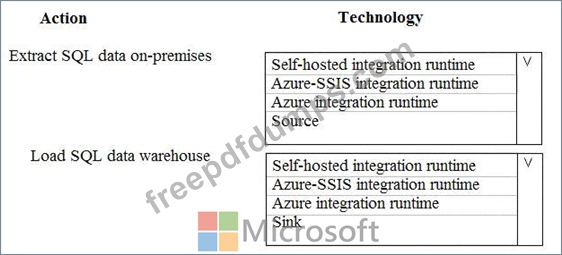
The datacenter is running out of capacity. Because of the network configuration, you must extract on premises data to the cloud over https. You cannot open any additional ports. The solution must implement the least amount of effort.
You need to create the pipeline system.
Which component should you use? To answer, select the appropriate technology in the dialog box in the answer area.
NOTE: Each correct selection is worth one point.

DP-200 Exam Question 190
You are developing a solution to visualize multiple terabytes of geospatial data.
The solution has the following requirements:
*Data must be encrypted.
*Data must be accessible by multiple resources on Microsoft Azure.
You need to provision storage for the solution.
Which four actions should you perform in sequence? To answer, move the appropriate action from the list of actions to the answer area and arrange them in the correct order.
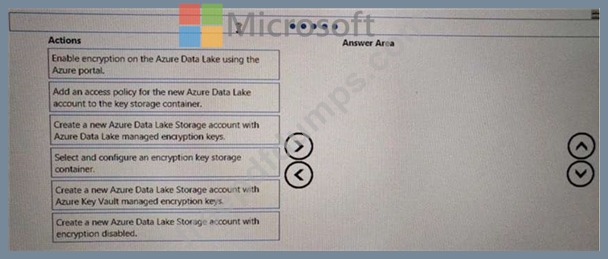
The solution has the following requirements:
*Data must be encrypted.
*Data must be accessible by multiple resources on Microsoft Azure.
You need to provision storage for the solution.
Which four actions should you perform in sequence? To answer, move the appropriate action from the list of actions to the answer area and arrange them in the correct order.



